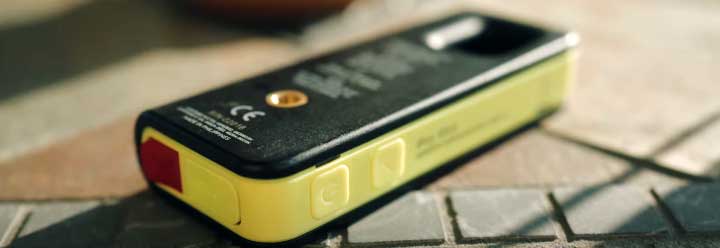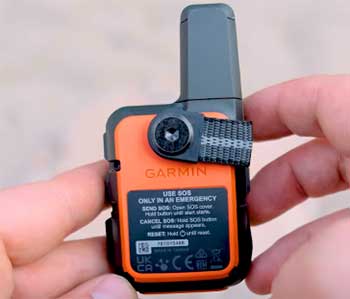When planning your next outdoor adventure, communication is paramount. Whether you’re a seasoned mountaineer or an amateur hiker, ensuring that you’re always reachable is a crucial part of your safety kit.
Bivy Stick and Garmin inReach are two of the leading satellite communicators, each providing unique features for the outdoor enthusiast.
So, let’s dive deep into their pros and cons, to help you make an informed decision.
A Brief Comparison Table
| Feature | Bivy Stick | Garmin InReach |
| Subscription Plans | Flexible, month-to-month | Annual contracts |
| Satellite Network | Globalstar | Iridium |
| Global Coverage | Most areas except extreme polar regions | Truly global, pole-to-pole |
| Navigation Features | Basic GPS tracking | Advanced navigation with preloaded topo maps, digital compass, and altimeter |
| User Interface | Smartphone app | Smartphone app + device interface |
| Size and Weight | Lighter and more compact | Slightly heavier and bulkier |
| Battery Life | Up to 120 hours (tracking mode) | 50-100 hours (depending on the model and mode) |
Bivy Stick: An Overview

The Bivy Stick, a compact and lightweight device, facilitates communication via the Globalstar satellite network, which covers most of the Earth’s surface except the extreme polar regions.
It pairs with your smartphone, allowing you to send messages, share your location, track your route, and even call for emergency help.
Pros of Bivy Stick
- Flexibility and Freedom: One of Bivy Stick’s major advantages is its flexible data plan. You’re not tied to a yearly contract; instead, you can choose a month-to-month plan and switch it off when not needed, making it economical for occasional adventurers.
- Ease of Use: With its user-friendly app interface, you can easily access all features from your smartphone. Besides, it doesn’t require any external antenna or accessories, which simplifies the setup process.
- Compact and Robust: Weighing just 100 grams, Bivy Stick is one of the lightest satellite communicators on the market. Its weather-resistant and shockproof design is built to endure harsh outdoor conditions.
Cons of Bivy Stick
- Limited Two-Way Communication: While you can send messages via Bivy Stick, receiving messages requires an internet connection, which may not always be possible in remote areas.
- Battery Life: The battery life may be a concern for longer expeditions. With a full charge, the Bivy Stick offers about 120 hours in tracking mode, which could be limiting for extended trips without power sources.
Also Read: Alternatives To Garmin inReach Satellite Communicator.
Garmin inReach: An Overview
Garmin inReach satellite communicators, including inReach Mini and inReach Explorer+, leverage the Iridium network to provide truly global coverage. Like Bivy Stick, these devices allow two-way text messaging, GPS tracking, and emergency SOS functionality.
Pros of Garmin inReach

- True Global Coverage: The Iridium network offers pole-to-pole coverage, providing an edge over the Bivy Stick for those traveling to extreme locations.
- Advanced Navigation Features: Garmin’s inReach devices include preloaded topographic maps, built-in digital compass, and barometric altimeter, making them suitable for hardcore explorers.
- Superior Battery Life: Garmin inReach Mini offers up to 50 hours in 10-minute tracking mode, while the inReach Explorer+ boasts up to 100 hours, outperforming Bivy Stick in battery life.
Cons of Garmin inReach
- Costly Subscription: Unlike Bivy Stick, Garmin inReach requires an annual contract, which may be pricey for occasional users.
- Size and Weight: Garmin’s devices are slightly heavier and bulkier than the Bivy Stick, which could be a deciding factor for ultralight backpackers.
Key Differences Between Bivy Stick and Garmin InReach
While both Bivy Stick and Garmin InReach are leading satellite communicators designed for outdoor safety, they differ significantly in certain aspects.
In this section, we’ll elaborate on their unique features, functionality, and user-friendliness, providing a comprehensive comparison to aid your decision-making process.
- Subscription Plans and Costs
One of the most noticeable differences between Bivy Stick and Garmin InReach lies in their subscription models.
Bivy Stick offers a more flexible, no-commitment plan. You pay for what you need on a month-to-month basis, and when not in use, you can deactivate it without any penalty.
This flexibility is perfect for occasional users who don’t want to commit to an annual contract.
On the other hand, Garmin inReach plans are bundled into annual contracts. This means you’ll have to pay a monthly fee regardless of whether you use the device or not.
While this could be more costly for infrequent users, it might be more cost-effective for those who are constantly on the move and require a reliable communication channel.
- Satellite Network Coverage
Bivy Stick leverages the Globalstar satellite network, which covers most parts of the world but falls short in the polar regions. This coverage is sufficient for most outdoor enthusiasts, but for those planning to venture into extreme polar regions, it might be inadequate.
Garmin inReach, conversely, uses the Iridium network. This network provides truly global, pole-to-pole coverage, making it the better choice for expeditions to the most remote corners of the earth.
- Navigation Features and Functionality
When it comes to advanced navigational features, Garmin inReach outperforms the Bivy Stick. While Bivy Stick offers basic GPS tracking, Garmin’s inReach devices come with preloaded topographic maps, a built-in digital compass, barometric altimeter, and accelerometer.
These additional features might be overkill for the casual hiker, but for the hardcore explorer, they can be essential tools for navigating unfamiliar terrain.
- User Interface and Ease of Use
Both devices offer smartphone pairing for an easy-to-use interface. However, Bivy Stick takes a more streamlined approach, operating predominantly through its mobile app, which is intuitive and user-friendly.
On the other hand, Garmin inReach devices have their own interface on the device in addition to the smartphone app. This can be advantageous in situations where you need to save battery life on your phone or when your phone isn’t accessible.
- Size, Weight, and Battery Life
In terms of portability, Bivy Stick takes the win. Weighing just 100 grams, it’s one of the lightest satellite communicators available. On the flip side, Garmin’s devices are slightly heavier and bulkier, which could be a concern for ultralight backpackers.
Battery life is another important consideration. Garmin inReach Mini offers up to 50 hours in 10-minute tracking mode, while the inReach Explorer+ can last up to 100 hours. Bivy Stick offers about 120 hours in tracking mode, but this can drain rapidly if used for messaging or SOS alerts.
Also Read: Is Verizon Jetpack Better Than Phone Hotspot For The Road?
Frequently Asked Questions (FAQ)
Bivy Stick uses the Globalstar satellite network for communication.
Both Bivy Stick and ZOLEO have their unique advantages. Bivy Stick offers more flexible plans and is lighter, whereas ZOLEO, leveraging the Iridium network, provides better global coverage.
For hardcore adventurers who need reliable communication, advanced navigation, and global coverage, Garmin inReach is absolutely worth the investment.
As of now, there’s no official information about Garmin discontinuing the inReach Mini. It remains one of their popular satellite communicator models.
Wrapping Up
In conclusion, both Bivy Stick and Garmin inReach satellite communicators are reliable companions for outdoor enthusiasts. While Bivy Stick scores high on flexibility, user-friendliness, and portability, Garmin inReach offers unparalleled global coverage, advanced navigation features, and superior battery life.
Ultimately, the choice between the two will depend on your specific requirements, frequency of use, and expedition locations.

